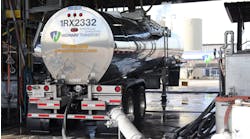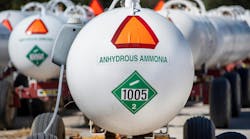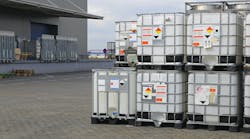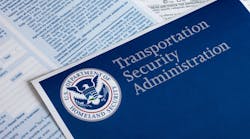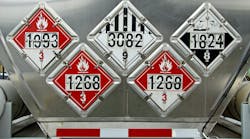Canned EPA Administrator Scott Pruitt on Friday got in a parting shot at Obama-era “regulatory overreach” in his last day in office, ordering the agency not to enforce an annual cap on glider kits.
“The Agency is exercising its enforcement discretion in 2018 and 2019,” Molly Block, an agency spokeswoman, said in a statement reported originally by The New York Times.
Gliders, or new chassis into which refurbished older engines without modern emissions control systems can be installed, were deemed to be a substantial loophole in the decade-long EPA effort to greatly reduce emissions from heavy-duty commercial vehicles.
Indeed, given the expense and troublesome nature of the mandated emissions controls, production of gliders has soared since 2010, going from going from just a few hundred per year to more than 10,000 in 2015.
So, in the Phase 2 Greenhouse Gas Emissions and Fuel Efficiency Standards for Medium- and Heavy-Duty Engines and Vehicles (GHG 2) rule that took effect Jan. 1, 2017, EPA required that engines installed in new glider vehicles meet the emission standards applicable in the year of assembly. A “small business” exception was included in GHG2 to allow glider builders to assemble up to 300 non-compliant units per year through 2020.
But last fall, following a lobbying effort and appeal by leading glider builder Fitzgerald Glider Kits, Pruitt determined that that gliders should not be regulated as “new motor vehicles” under the Clean Air Act.
“Gliders not only provide a more affordable option for smaller owners and operators, but also serve as a key economic driver to numerous rural communities,” Pruitt said, and EPA proposed to repeal the emission standards and other requirements for glider vehicles.
A subsequent public hearing on the matter, however, drew dozens of angry opponents compared to just a couple of supporters.
“It’s well-known that gliders are purchased to save money, avoid maintenance costs … and skirt federal excise tax payments,” said Glen Kedzie, American Trucking Associations vice president of energy and environmental affairs council. He noted that ATA member fleets have paid $31,000 more on average per new truck since 2004 to comply with new emissions rules.
And Susan Alt, senior vice president of public affairs, Volvo Group North America, cited EPA’s own testing which found that glider vehicles emit 43 times more NOx and 55 times more soot than today’s low-emission diesels. EPA estimates that gliders make up about 5% of the entire Class 8 market, but contribute about one-third of all NOx and particulates from the sector.
“The current annual impact of glider emissions already grossly outweighs that of the VW diesel engine violations in the U.S. at their peak,” Alt said. “A repeal of the Phase 2 glider provisions makes a mockery of the massive investments we’ve made to develop low-emission compliant technology.”
Rep. Jamie Raskin of Maryland said he was “baffled and confounded” as to why EPA would consider a repeal. He noted that Fitzgerald had failed to secure legislative relief, so the company’s owners then met directly with Pruitt.
According to Raskin, Fitzgerald’s petition included new information on glider vehicle emissions which purported to show that gliders were less polluting than non-glider vehicles. But that “independent” study was bought and paid for by none other than Fitzgerald.
“It is important to note that the study, run by Tennessee Tech University, has been criticized by experts for its poor and shoddy quality and has provoked serious ethical questions about the university’s academic independence and its cozy relationship with Fitzgerald,” he said.
On the other side, glider builder and trucker Farrell “Dale” Clark Jr., president of D & B Trucks, said he fully supported the proposal, and he referenced the Fitzgerald-funded study. Clark stressed that the only new parts in a glider kit are the cab and the hood; the remaining parts of the truck are all used parts.
He also noted an environmental benefit to the pro-glider case: “We really should be thanking our glider builders. We should be encouraging every trucker in this country to use a glider, or should I say a ‘recycled truck,’” Clark said. “This is exactly what we do in our business. We recycle old trucks, not only do we create hundreds of jobs, we save our trucking industry thousands of dollars.”
Tennessee Tech later informed EPA that the agency should not use the university's study on glider kits in developing federal emissions regulations, and that the school was pursuing a peer review of the report and investigating claims of research misconduct.

